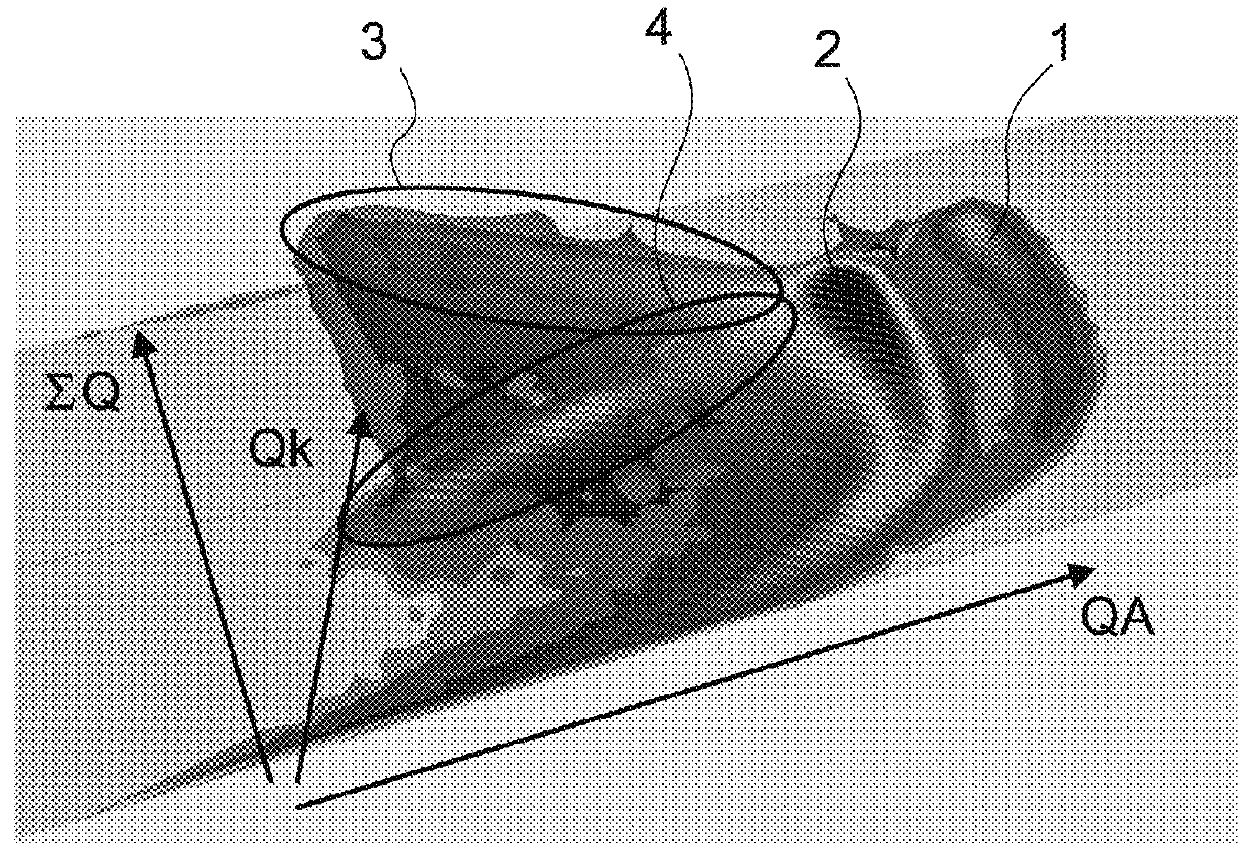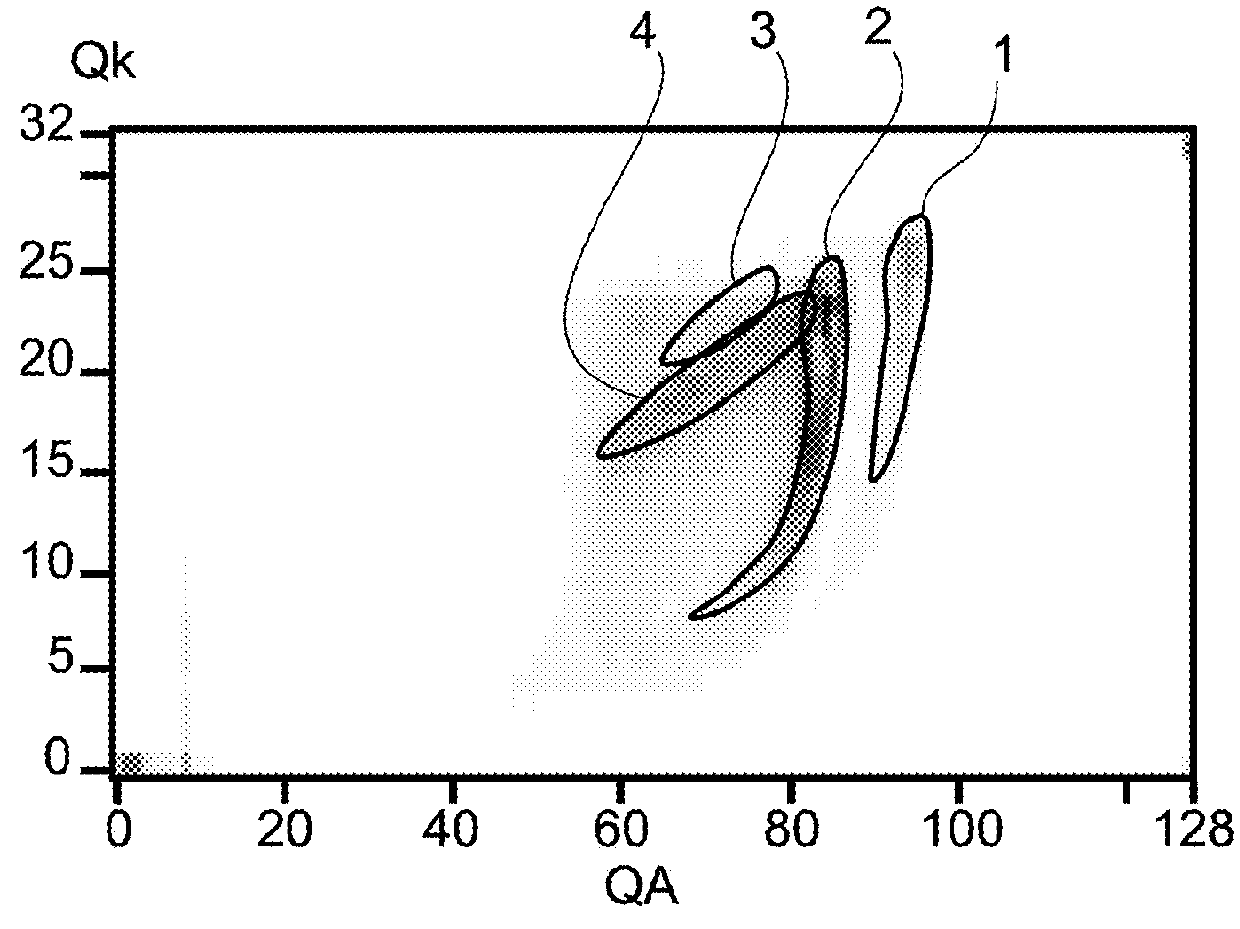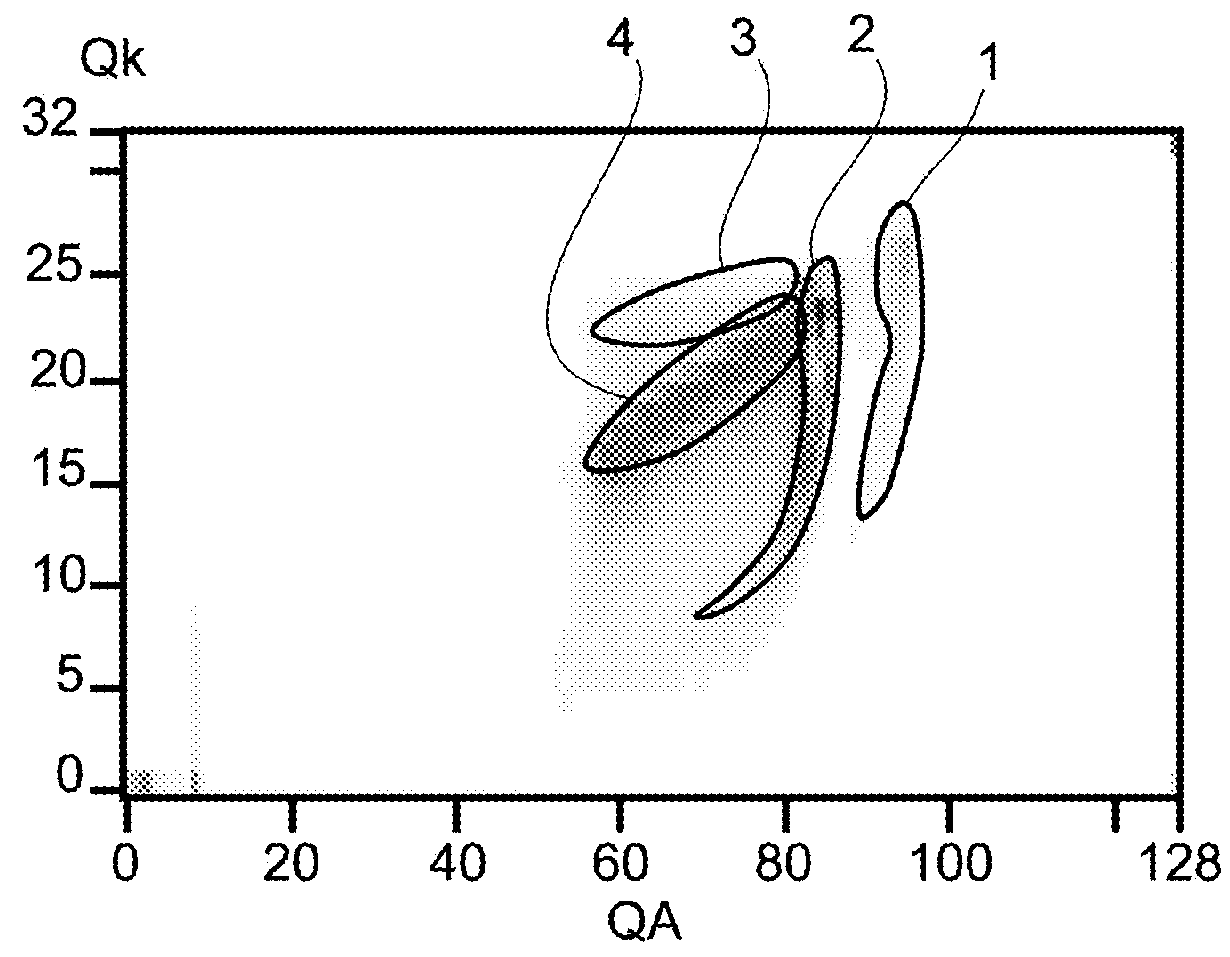Method for processing data derived from an ionizing radiation detector
a technology of ionizing radiation and detector, applied in the direction of complex mathematical operations, speed/acceleration/shock measurement devices, testing/calibration, etc., can solve the problems of measurement imperfections and insufficient methods, and achieve the effect of universal us
- Summary
- Abstract
- Description
- Claims
- Application Information
AI Technical Summary
Benefits of technology
Problems solved by technology
Method used
Image
Examples
example no.1
EXAMPLE NO. 1
[0054]It is sought here to eliminate diffused radiation for a CZT (or CdZnTe) detector in a situation in which sharing of charges between elementary anodes adjacent to the electron-collector anode may occur. The histogram of events may be a function of three parameters:[0055]the final charge QA (total electric charge during the arrival time of the particles) measured at the anode under consideration for an event, this anode being the anode whose final charge QA is the highest,[0056]the final charge of the cathode QK (corresponding to the algebraic charge measured on all the anodes, taking in consideration the sign);[0057]the sum of the final charges ΣQ measured on the collector anodes adjacent to the anode under consideration.
[0058]FIG. 1 shows a three-dimensional histogram of events and FIG. 2 shows a cross-section of this histogram for a fixed value of the third parameter (ΣQ). The values of the histogram correspond to numbers or densities of events at the coordinates...
example no.2
EXAMPLE NO. 2
[0075]here the purpose is to locate interactions in the detector. For this purpose, the parameters of each interaction are the coordinates, along plane P, of the barycentre of the different signals measured by the elementary anodes, weighted with their charge excursion. Plane P here corresponds to the plane parallel to the electrodes. This is illustrated in FIG. 7.
[0076]The histogram of events is therefore a diagram defined by the coordinates (xB, yB) of the barycentre.
[0077]The calibration step consists of constructing n.p histograms by moving a collimated source to n.p known positions in the field of vision (n in one direction, and p in the other), using a narrow collimator compared with the size of the electrodes. Therefore, the position of the interaction in plane P is directly obtained from the position of the collimated source. This histogram corresponds to P(X / S), where X designates the coordinates (xB and yB) of the barycentre of the different signals measured b...
example no.3
EXAMPLE NO. 3
[0089]this concerns the combination of the two preceding examples: it is sought to determine the position of the interaction in the plane of the detector, whilst setting aside the contribution of diffused radiation, the whole forming criterion S. The histograms of events may comprise four parameters: total charge at the anode which collected the maximum charges, total charge at the cathode, and the two coordinates of the barycentre of charges. By barycentre of charges is meant the point of the plane of the segmented electrodes determined by calculating the barycenter of the elementary electrodes weighted with the charge excursion measured by each thereof.
[0090]To obtain P(X / S), the n.p histograms are acquired with a finely collimated point source, whose position is known. To obtain P(X), a similar histogram is obtained with a spread-out uniform source, generating a quantity of diffused radiation representing the true acquisition conditions. P(S) is known as in Example N...
PUM
 Login to View More
Login to View More Abstract
Description
Claims
Application Information
 Login to View More
Login to View More - R&D
- Intellectual Property
- Life Sciences
- Materials
- Tech Scout
- Unparalleled Data Quality
- Higher Quality Content
- 60% Fewer Hallucinations
Browse by: Latest US Patents, China's latest patents, Technical Efficacy Thesaurus, Application Domain, Technology Topic, Popular Technical Reports.
© 2025 PatSnap. All rights reserved.Legal|Privacy policy|Modern Slavery Act Transparency Statement|Sitemap|About US| Contact US: help@patsnap.com



